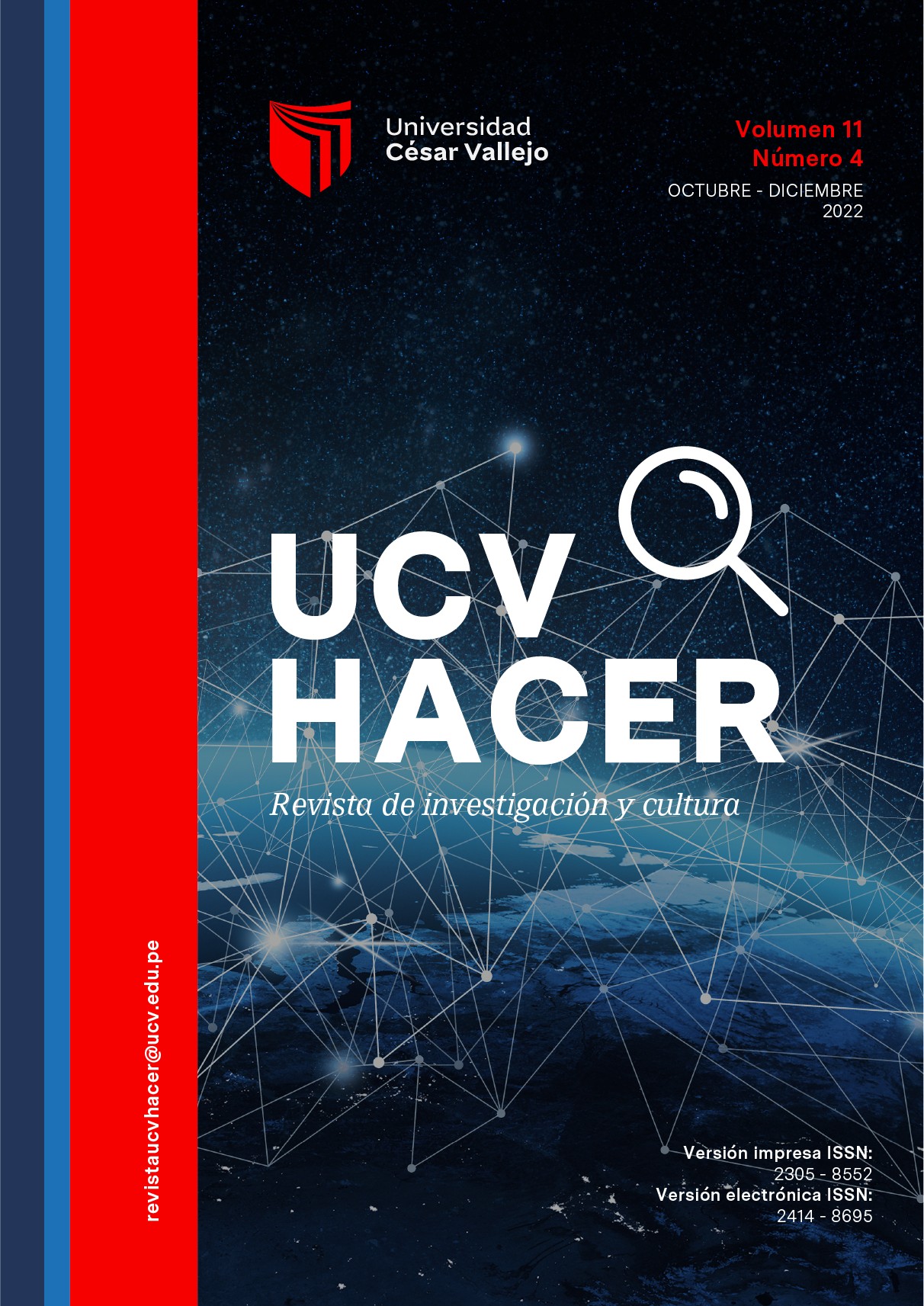Reverse osmosis system in arsenic removal from groundwater in Pacora
Keywords:
Arsénico, Aguas subterráneas, Osmosis inversa, ICPMSAbstract
T
Arsenic contamination of groundwater in several districts of the province of Lambayeque has made it undrinkable. The objective of this study was to determine the efficiency of the reverse osmosis system in the removal of arsenic in groundwater from the village of Las Juntas Pacora, Lambayeque, treated with 1, 2 and 3 activated carbon filters; The water samples were analyzed in two series (one with an activated carbon filter and the other with the reverse osmosis system). Samples of groundwater and water treated by reverse osmosis were taken to the Cajamarca Regional Water Laboratory, where the total metal concentrations were determined using the Induced Coupled Plasma Mass Spectrometry (ICPMS) technique. The results showed high efficiency of the reverse osmosis system, in the treatment of water, removing arsenic from 0.018 mg/L to 0.0049 mg/L, which represents 72.78% efficiency, with these characteristics the water would be suitable for consumption by the inhabitants of the area compatible with the supreme decree 031-2010 – SA.
Keywords: Arsenic, Groundwater, Reverse Osmosis, ICPMS.
Downloads
Published
Versions
- 2022-10-01 (3)
- 2022-10-01 (2)
How to Cite
Issue
Section
License
Copyright (c) 2022 UCV Hacer

This work is licensed under a Creative Commons Attribution-NonCommercial-ShareAlike 4.0 International License.










